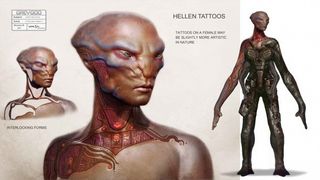
Written by Rob Zacny.
Petroglyph's upcoming Grey Goo is not just a sci-fi RTS, but a launch-pad for additional games that will take place in the same universe. With so much on the line, it's crucial for Petroglyph to create a setting that won't just provide a good backdrop for RTS combat, but become a world that will fascinate players for years to come.
That's why the developer is collaborating with Weta Workshop , the prop-makers and conceptual artists who helped make Peter Jackson's Lord of the Rings trilogy such a convincing adaptation of Tolkien's work. While Weta is best-known for its fantasy work, the studio has also worked on science fiction films, such as Elysium and District 9.
With Grey Goo, Weta and Petroglyph have a special challenge on their hands. RTS games are rarely the best vehicle for exploring a world, and this one has to evoke deeper themes and set the stage for a broader story.
Working with Weta
“As an art director, you cherish these moments when they come along,” says Petroglyph's Jeff Troutman. “I've been doing this for 24 years, and there's been projects where I'm just like, 'Ehhhhh, I don't know about this.' But [publisher] Grey Box basically made us a sandbox. They said, here are some boundaries, but go and play with your toys. Figure out what you want to do visually. And that is so important when you're dealing with science fiction.”
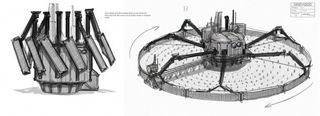
Troutman's goal, in a nutshell, is “familiar, but fantastic.” Petroglyph wanted a world that was relatable and yet vaguely unsettling and exciting. Most important of all, however, was that the planet you fight over had to feel like it meant something.
The biggest gaming news, reviews and hardware deals
Keep up to date with the most important stories and the best deals, as picked by the PC Gamer team.
“We wanted a world that was so beautiful that we wanted protect it, and love it,” says Executive Producer Ted Morris. “I still take the camera and fly around, just because I want to be there.”
Troutman explains how Grey Box broached the subject of working with a secondary design studio. “All of a sudden, somebody from Grey Box is like, 'Hey, you mighta heard of these guys, they're called Weta?' And I'm like, 'What?' Because I'm a huge fan. From an art standpoint, I study all their stuff. And the chance to get in there and direct these artists was fantastic.”

Weta's strength is in turning art direction into a convincing, internally consistent world. They can take a piece of concept art for a given RTS unit and break it down into a functional schematic. When an annotated Weta concept sketch comes back from New Zealand, what was once just a drawing on a page becomes a working machine, with detailed notes about how its pieces move together and what each part is for.
“Those guys are amazing,” Troutman said. “They're always thinking out of the box and trying new things. You give them a task like: make some farming equipment. And you get back something you've never seen before.”
Meeting your idols
Initially, the Petroglph team were a little intimidated by working with a team they admired so much.
“The fantastic thing that started to happen was that we would come up with something,” says Troutman, “and Weta would go, 'Whoa!' And how good does that feel? But Grey Box created this environment where there wasn't this, 'This is Weta, and we're scared to death!' It was like we were all one company.”
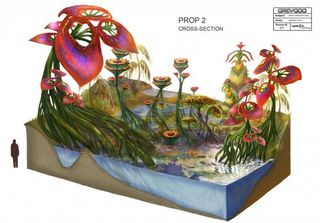
Whenever a new set of Weta designs and notes came in, Troutman's office would fill up with people wanting to see the latest artwork from the workshop. Each new arrival inspired the art and engineering team to go off in new directions, and that led them to come up with new ideas that they sent back to Weta for refinement.
The best example of what Weta does might be in their concept designs for the Beta faction. What started as a simple idea—an industrial alien race of engineers and mechanics—turned into something far more interesting in Weta's hands. The designers implied an entire social structure and way of life for the alien race from just a few pieces of artwork.
This extra design work gives Grey Goo a richness that most other RTS games lack. While players might spend most of their time focused on combat and build-orders, Petroglyph and Weta have hidden a ton of backstory and context in plain sight. Because of their work, Grey Goo doesn't just look gorgeous, but also sets the stage for something much larger.
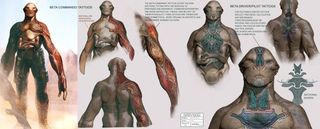
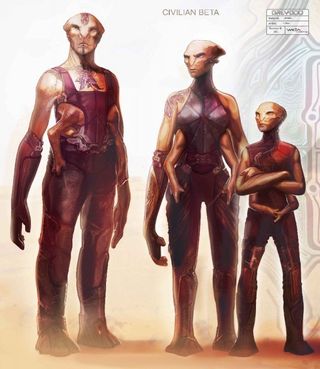
PC Gamer is the global authority on PC games—starting in 1993 with the magazine, and then in 2010 with this website you're currently reading. We have writers across the US, Canada, UK and Australia, who you can read about here.
Most Popular







